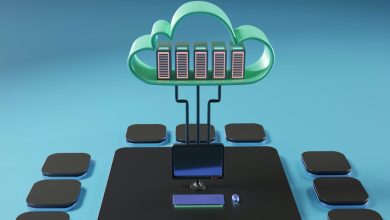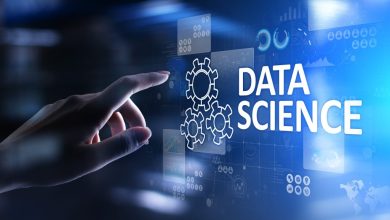
The Urgent Need for Continuous Upskilling
As the world of work has evolved rapidly over the past 20 years, with the introduction of technology, so has the need for workers to continuously upskill. The half-life of a skill is now around 5 years, meaning that the skills you possess today will be about “half as valuable five years from now due to technological advancements and changing industry demands”.
So, to stay relevant in the world of work, adults need to continuously upskill and learn new skills, but barriers exist. Learning at work requires time set aside away from your day job to take training; further education is traditionally expensive, and, given an uncertain economic climate, many organizations have not invested in learning programs for their workforce because it is difficult to measure the ROI and create a compelling business case for learning. This is where AI is starting to make a splash.
How AI is Changing the Learning Game
With the help of Artificial Intelligence (AI) advances, learning technology or “skills tech” companies have started to revolutionize adult education and career development, offering transformative solutions that leverage machine learning and skills data to enhance learning experiences, improve outcomes, and provide data-driven career pathways.
One of the most impactful applications of AI in education is improving the learning experience through the ability to tailor learning to individual needs. By adapting scenarios, pacing, and content to match a learner’s preferences and level of understanding, AI fosters more engaging and effective learning environments. Even the “artificial agent” delivering the training has been built to be engaging and empathetic to a learner’s needs. This personalized approach enhances knowledge retention, especially in adult audiences by addressing the learner’s unique challenges and strengths. Also, to allow for time constraints, many organizations are deploying this in bite-sized and just-in-need formats, enabling learners to “learn in the flow of work”.
AI also plays a pivotal role in career development – by analyzing an individual’s work and educational experiences, work performance, and learning, the AI can create a skill profile that it can then match to new jobs or careers. By identifying adjacent or transferable skill sets, AI can suggest personalized career paths or job opportunities where a person’s existing capabilities could be a strong fit, even when their experience doesn’t fully align with traditional requirements. It can also identify potential gaps in skill sets and recommend learning opportunities to close the gaps. This can open new career opportunities for adult learners.
Talent Intelligence Platforms: A Strategic Workforce Tool
So-called “Talent Intelligence Platforms” are empowering both individuals and organizations by identifying upskilling opportunities and recommending targeted learning paths. These platforms help individuals bridge knowledge gaps to stay relevant and up-to-date with their skills, while also enabling organizations to address critical skill shortages. This is particularly valuable for adult learners whose existing skills may no longer meet the evolving demands of their industries, or for organizations that are changing focus or experiencing significant disruption in their industries. However, it is not as easy as flicking a switch, in order to make the use of these platforms valuable, organizations need to understand what their most critical workforce types, segments or job families are to deliver on their strategic objectives, this requires a level of maturity when it comes to organizational strategy as well as workforce planning tied to that strategy.
Finally, one of the biggest barriers to learning has traditionally been companies’ willingness to invest in learning, since it can be difficult to measure ROI. But the good news is two-fold; firstly, the existing learning platforms are becoming better and have already started to integrate AI to develop tailored learning paths that align with both individual learner needs and specific career goals, essentially increasing the value of the technology you already purchased. Secondly, some of these platforms prioritize continuous learning and upskilling by allowing learners to measure progress through actual skill acquisition rather than simply tracking course completion. This ensures that learners stay competitive in a fast-changing job market and ensures that organizations can more accurately measure the impact of their investments, which, in turn, may lead to more willingness to invest in additional learning experiences and opportunities for their workforce.
Case Study: Cloud Migration at a Financial Services Giant
One example that brings this to life: in 2022, this large financial services institution formalized Public Cloud as the target state for the company’s technology applications. To execute this pivot, the company needed skilled engineers who could support the migration from legacy infrastructure and who could then operate these applications in the public cloud environment. This required the HR team to step up and support with a skills-based talent and learning strategy that could:
◦ Identify who had the right skills already, and ensure that they focused on the highest priority applications
◦ Identify who should be upskilled and in what priority order
◦ Understand where the organization had skill gaps – moving beyond anecdotal evidence and grounding that view in data to mitigate operational risk
◦ Differentiate proficiency levels and understand which proficiency levels were required for each cohort to migrate applications from on premise to the cloud
◦ Design and deliver learning based on the desired proficiency levels and skilling targets
◦ Understand the impact of learning – if it moves the needle on proficiency levels and determining what learning content is most effective
◦ Understand if upskilling is driving faster migration times, more effective security and operations, improved productivity, and/or overall stronger innovation
This helped the organization understand if certifications would be required for all engineers or otherwise define what level of certification was required across each team. It also allowed them to proactively sense how skills are evolving and the associated implications for jobs of the future, creating a competitive advantage by understanding which of today’s roles are more efficient to upskill.
Transforming Outcomes for Individuals and Organizations
To conclude, AI is driving a paradigm shift in adult education, making learning more engaging, personalized, and outcome-focused. Organizations that leverage AI tools can improve employee engagement, align skills more effectively with business needs, and foster a culture of continuous learning. The result is a win-win scenario: better career outcomes for individuals and enhanced productivity and innovation for organizations.
By harnessing AI’s potential, we can reimagine adult education and career development, creating a future where lifelong learning and career growth are accessible, impactful, and sustainable.





